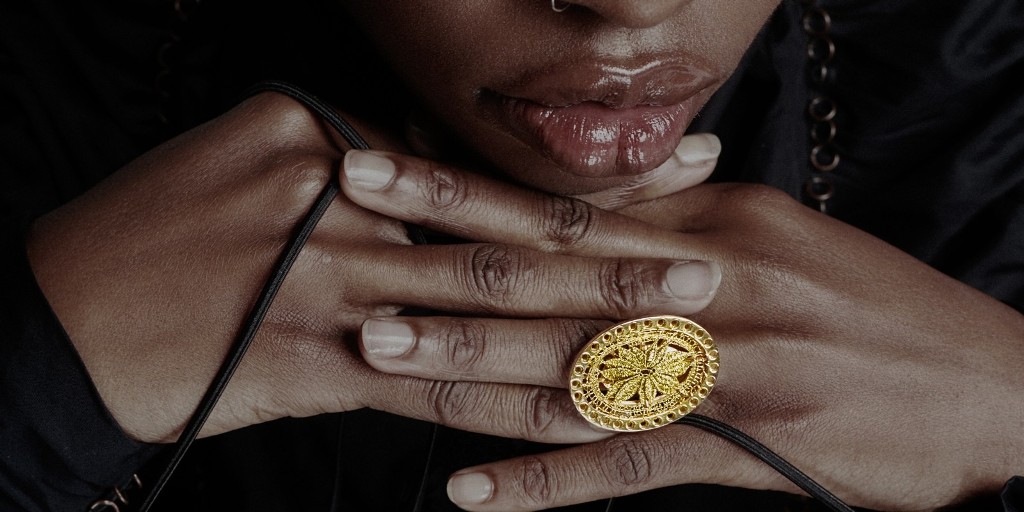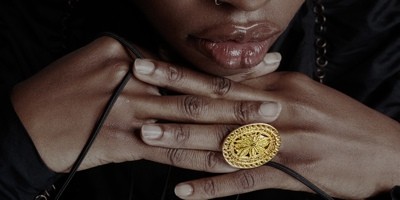The Jewel of the Tombolo
The Jewel of the Tombolo

HISTORICAL NOTIONS ABOUT PILLOW LACE
Lace does not appear before the beginning of the 16th century. It is a late technique compared with other forms of similar fibres such as waving or embroidery.
“Lace represents a technical concept and it does not come from the East unlike all other textile techniques.”
Lace was simultaneously invented in two different places with different techniques (bobbin and needle), but with the same aesthetic goal. It was invented in the Flanders in the Anversa region and in Venice, both at the beginning of the 16th century.
In the society of this period the printed book was one of the most important changes: during a century the editors from Venice, Paris and Anversa published dozens of books about pillow lace models. Between 1557 and 1563 in Venice were published “Le Pompe” (70% of all books about lace were published there for all Europe during the 16th century), two volumes exclusively for working pillow lace.
Lace was considered “ideal” because it was a materialized form of an immaterial idea, so, it was something spiritual, harmoniously connected with the concept of beauty which was spread by Neo-Platonists of the Renaissance. This led the audience to the feeling of beauty.
Everybody could benefit from the added value of pillow lace: rich people could afford it, a gold or silver thread or white flax; poor people could not afford it and they made it by themselves. Young people wore it as much as old people and it was equal for men and women because lace was considered something only for women starting from the 19th century.
Pillow lace has always been expensive both for the time needed and for the artistic ability. Lace has always been considered a precious property, we can find it in the lists of inventory or wills together with paintings, furniture, silverware and jewels.
HISTORY OF PILLOW LACE IN SCANNO
According to some testimonies, pillow lace technique reached Scanno when master builders’ wives from Lombardy (they were in Scanno to rebuild churches and monuments after an earthquake) started to teach this art to local women who spent long winters working on it.
Others think that the maritime republics of Venice and Genoa played an important role in working pillow lace started from 1600 when some exhibitions-markets were organized in the Abruzzo region with the exchange of goods.
Wool, fabrics and cheese were the typical products of Scanno and they were bartered with other goods among which pillow lace that enriched the trousseaux or made tablecloths or holy paraments precious.
The oldest documents are the evidence of the presence of pillow lace in Scanno and they go back to the middle of 1500.
These documents are composed of inventories of church goods and “dotal” goods in which the dowry of the future bride was transcribed.
Mr. Celidonio asserts about a “dotal” document of 1609 that the oldest document found in Scanno goes back to 1548 and he gives us the explanation of the word “dobile”: long tablecloths with pillow lace used by puerperae especially for the accuracy of the turning down. During last century the false pleat was used with frills and pillow lace.
In the work “Il Collegio e Chiesa di Gesù e Maria” (1994) written by Giorgio Morelli, a well-known archivist searcher, he quotes an inventory of 1880 in which he makes a list of all goods of the confraternity Madonna delle Grazie in Scanno. Among all goods there is an “embroidered, red satin tablecloth with silver threads”, a very precious good which suits the tablecloth that today is still well preserved.
Other searchers say that working on pillow lace started when the “bodice” (ju cummudine) of women in Scanno was enriched with the “neck-opening” (gorget), which is a pillow lace sewn around the neck made of original, refined white thread. Each woman made it as she liked, higher than the previous lace, sometimes detachable and exchangeable.
Together with the working techniques also the drawings came to the Abruzzo region. These models were realized by Renaissance artists and they were transferred in specific books. These drawings were used above all by rich women; on the contrary women who could not afford these books started to make drawings on paper by themselves.
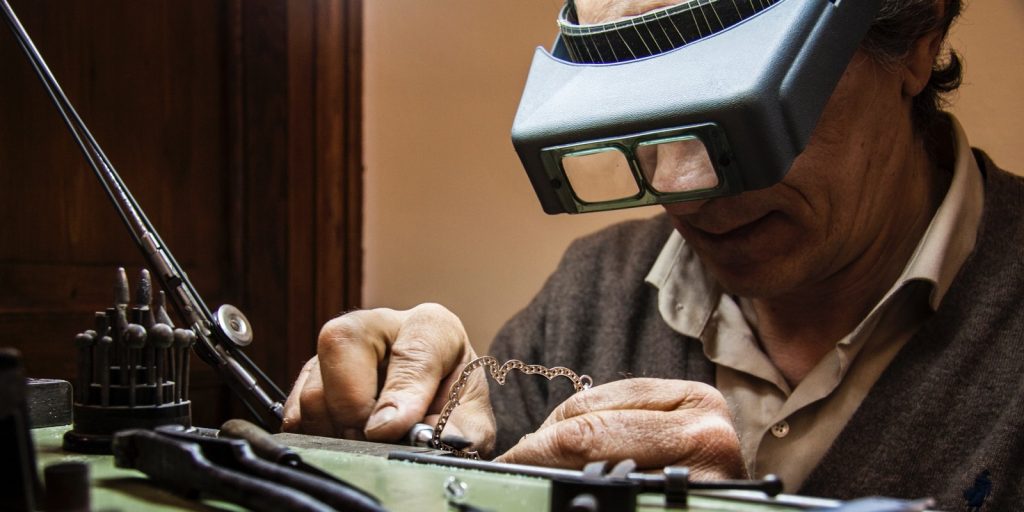
TECHNICAL PART OF WORKING
Pillow lace is an art that surprises for its vitality: it’s an art that requests agility and synchrony of hands and mind. Pillow, needle, bobbins and pins are tools for working lace. The complex drawings are handed down and reinvented and the names of them are the result of dialect expressions. Lace is made thanks to the bolster (tombolo) that is a different-sized cylindrical pillow padded with vegetable horsehair or in the past with straw, dry leaves or sawdust; it is a series of couples of bobbins (wooden sticks) on which the thread is wound by hand. It is blocked by a loop but it must be able to slide during processing performing an already prepared drawing on paper. Through pins all threads are fixed on the pillow and bobbins at the same height are used in two movements, “turning and crossing”. Through these movements we obtain an half or full past of lace. They can create different motives: latticed, tulle, weave, web and many other forms. The threads used for pillow lace can go in all directions: forward, backward, to the left, to the right; some threads can be left unused and can be reused later or can be used together.
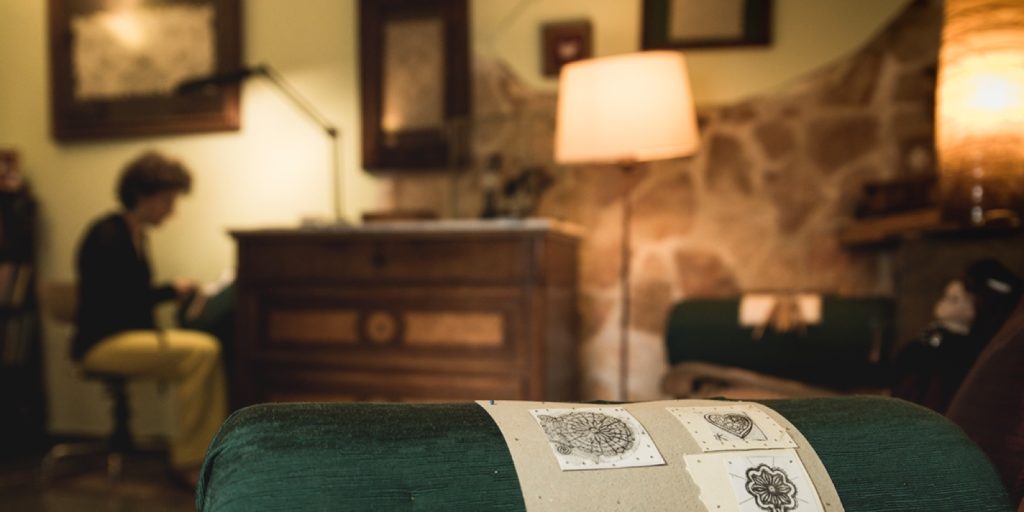
HISTORICAL NOTIONS ABOUT PILLOW LACE
HISTORICAL NOTIONS ABOUT PILLOW LACE

Lace does not appear before the beginning of the 16th century. It is a late technique compared with other forms of similar fibres such as waving or embroidery.
“Lace represents a technical concept and it does not come from the East unlike all other textile techniques.”
Lace was simultaneously invented in two different places with different techniques (bobbin and needle), but with the same aesthetic goal. It was invented in the Flanders in the Anversa region and in Venice, both at the beginning of the 16th century.
In the society of this period the printed book was one of the most important changes: during a century the editors from Venice, Paris and Anversa published dozens of books about pillow lace models. Between 1557 and 1563 in Venice were published “Le Pompe” (70% of all books about lace were published there for all Europe during the 16th century), two volumes exclusively for working pillow lace.
Lace was considered “ideal” because it was a materialized form of an immaterial idea, so, it was something spiritual, harmoniously connected with the concept of beauty which was spread by Neo-Platonists of the Renaissance. This led the audience to the feeling of beauty.
Everybody could benefit from the added value of pillow lace: rich people could afford it, a gold or silver thread or white flax; poor people could not afford it and they made it by themselves. Young people wore it as much as old people and it was equal for men and women because lace was considered something only for women starting from the 19th century.
Pillow lace has always been expensive both for the time needed and for the artistic ability. Lace has always been considered a precious property, we can find it in the lists of inventory or wills together with paintings, furniture, silverware and jewels.
HISTORY OF PILLOW LACE IN SCANNO
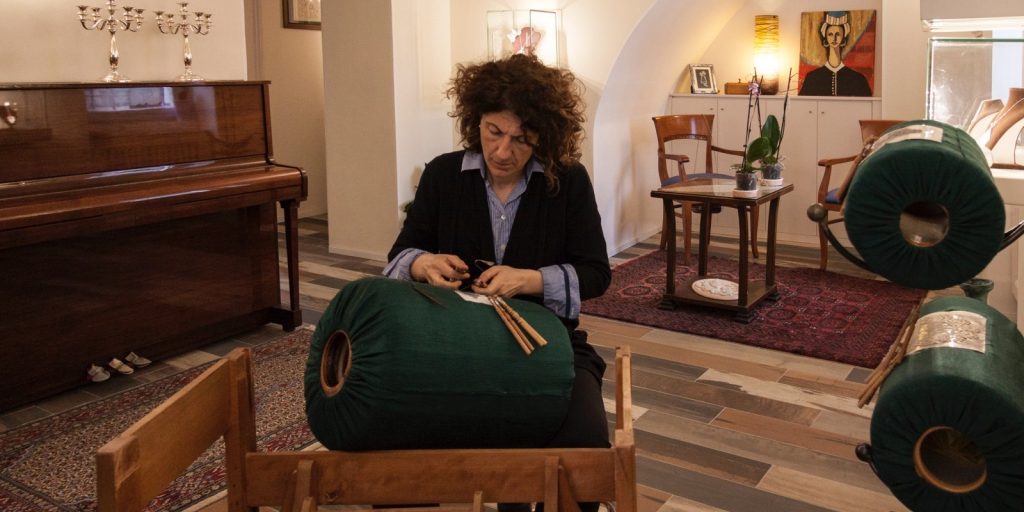
According to some testimonies, pillow lace technique reached Scanno when master builders’ wives from Lombardy (they were in Scanno to rebuild churches and monuments after an earthquake) started to teach this art to local women who spent long winters working on it.
Others think that the maritime republics of Venice and Genoa played an important role in working pillow lace started from 1600 when some exhibitions-markets were organized in the Abruzzo region with the exchange of goods.
Wool, fabrics and cheese were the typical products of Scanno and they were bartered with other goods among which pillow lace that enriched the trousseaux or made tablecloths or holy paraments precious.
The oldest documents are the evidence of the presence of pillow lace in Scanno and they go back to the middle of 1500.
These documents are composed of inventories of church goods and “dotal” goods in which the dowry of the future bride was transcribed.
Mr. Celidonio asserts about a “dotal” document of 1609 that the oldest document found in Scanno goes back to 1548 and he gives us the explanation of the word “dobile”: long tablecloths with pillow lace used by puerperae especially for the accuracy of the turning down. During last century the false pleat was used with frills and pillow lace.
In the work “Il Collegio e Chiesa di Gesù e Maria” (1994) written by Giorgio Morelli, a well-known archivist searcher, he quotes an inventory of 1880 in which he makes a list of all goods of the confraternity Madonna delle Grazie in Scanno. Among all goods there is an “embroidered, red satin tablecloth with silver threads”, a very precious good which suits the tablecloth that today is still well preserved.
Other searchers say that working on pillow lace started when the “bodice” (ju cummudine) of women in Scanno was enriched with the “neck-opening” (gorget), which is a pillow lace sewn around the neck made of original, refined white thread. Each woman made it as she liked, higher than the previous lace, sometimes detachable and exchangeable.
Together with the working techniques also the drawings came to the Abruzzo region. These models were realized by Renaissance artists and they were transferred in specific books. These drawings were used above all by rich women; on the contrary women who could not afford these books started to make drawings on paper by themselves.

TECHNICAL PART OF WORKING
TECHNICAL PART OF WORKING

Pillow lace is an art that surprises for its vitality: it’s an art that requests agility and synchrony of hands and mind. Pillow, needle, bobbins and pins are tools for working lace. The complex drawings are handed down and reinvented and the names of them are the result of dialect expressions. Lace is made thanks to the bolster (tombolo) that is a different-sized cylindrical pillow padded with vegetable horsehair or in the past with straw, dry leaves or sawdust; it is a series of couples of bobbins (wooden sticks) on which the thread is wound by hand. It is blocked by a loop but it must be able to slide during processing performing an already prepared drawing on paper. Through pins all threads are fixed on the pillow and bobbins at the same height are used in two movements, “turning and crossing”. Through these movements we obtain an half or full past of lace. They can create different motives: latticed, tulle, weave, web and many other forms. The threads used for pillow lace can go in all directions: forward, backward, to the left, to the right; some threads can be left unused and can be reused later or can be used together.

